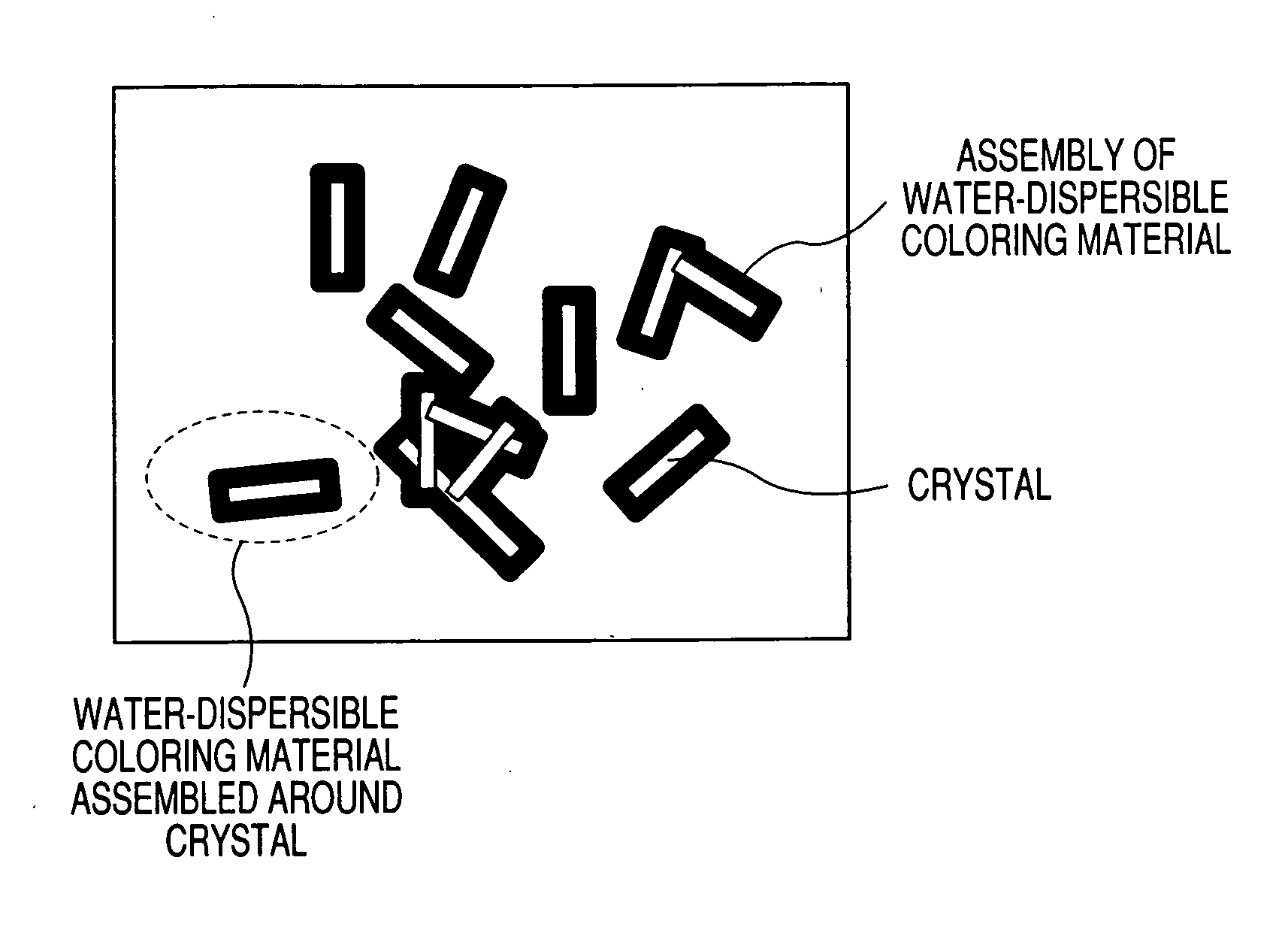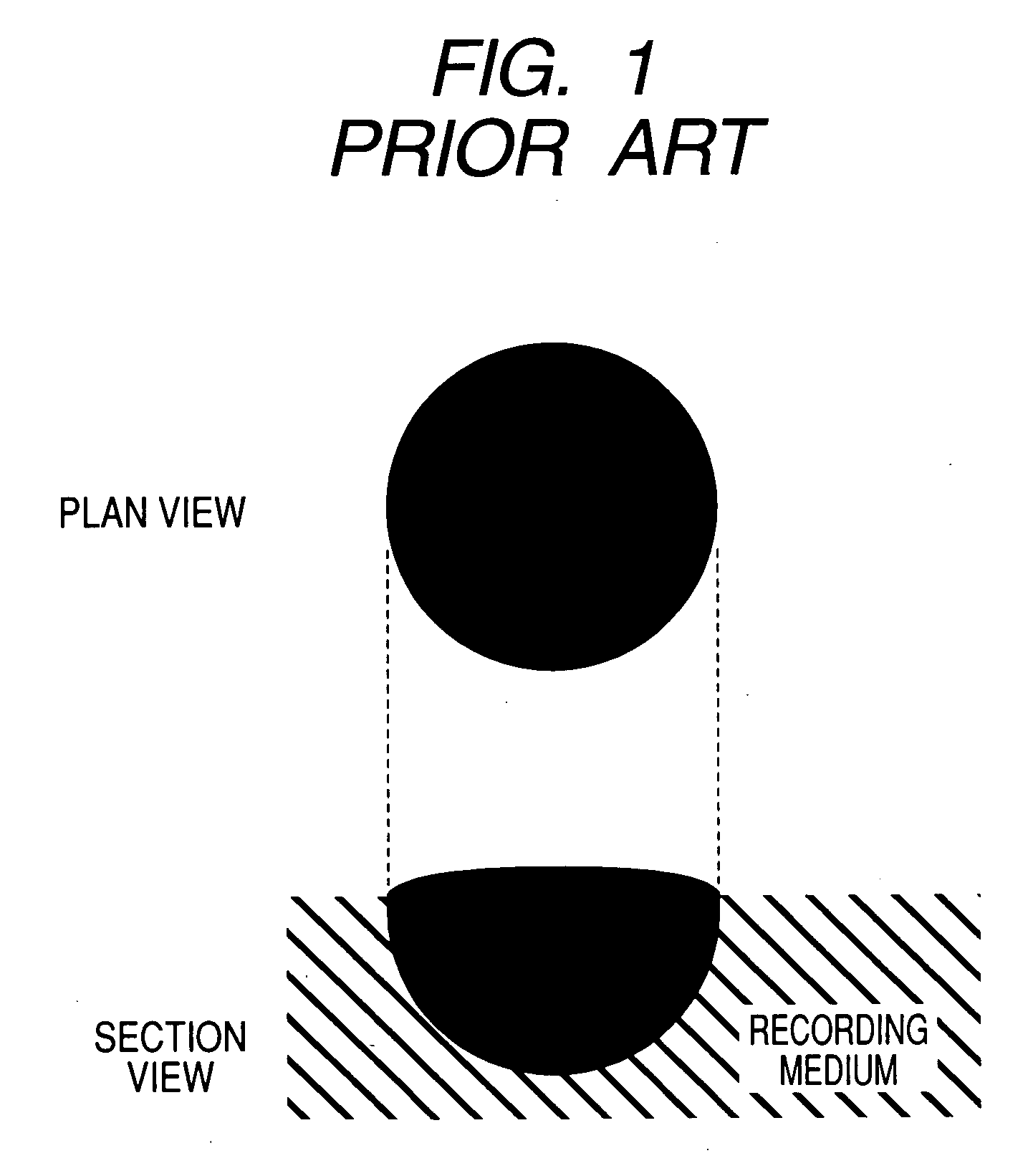Aqueous fluorescent ink, image recording method and recorded image
a fluorescent ink and recording method technology, applied in the field of aqueous fluorescent ink, image recording method and recorded image, can solve the problems of insufficient fastness of a recorded image, inability to enhance intensity, and decrease of fluorescen
- Summary
- Abstract
- Description
- Claims
- Application Information
AI Technical Summary
Benefits of technology
Problems solved by technology
Method used
Image
Examples
reference example 1
[0237] The following components were added to predetermined concentrations, and then the components were mixed and agitated sufficiently, followed by filtration through a micro-filter (manufactured by Fuji Photo Film Co., Ltd.) with a pore size of 0.2 μm under pressure to prepare an ink.
C.I. Acid Red 52 (first fluorescent coloring0.25parts by massmaterial):Glycerin:7.5parts by massDiethylene glycol:5parts by massUrea:5parts by massAcetylenol E100 (Acetylene glycol EO adduct,1part by massmanufactured by Kawaken Fine Chemicals Co.,Ltd.):Water:81.25parts by mass
(Evaluation)
(1) Fluorescence Intensity
[0238] Using an inkjet recording apparatus (BJS600, manufactured by Canon Inc.) having an on-demand type multi-recording head from which ink is discharged by imparting thermal energy depending on a recording signal to the ink, a solid pattern of 50% duty was printed on inkjet plain paper (SW-101, manufactured by Canon Inc.). Subsequently, under the following conditions, the fluorescenc...
reference examples 1 to 3
[0254] Furthermore, the fluorescence intensities and so on were evaluated just as in the case of each of Plural Fluorescence Example 1 and Reference Example 1. As shown in Table 3, there were substantial differences between the examples and the reference examples.
TABLE 3(1)(2)FluorescenceColor(3)intensitydevelopmentFastnessPluralAAAAAAFluorescenceExample 2PluralAAAAAAFluorescenceExample 3PluralAAAAFluorescenceExample 4PluralAAAAFluorescenceExample 5PluralAAAFluorescenceExample 6ReferenceBAABExample 2ReferenceBABExample 3
[0255] As described above, according to the present invention, there are provided: a fluorescence ink having a high fluorescence intensity, high color development property, and high fastness property, which cannot be attained in the prior art; and an inkjet recording method using such a fluorescence ink.
[0256] In some cases, a non-fluorescent water-soluble coloring material may be used in combination. In such a case, there can be utilized, for example, a direct dy...
example 1
Ink Composition
[0319]
Cabojet 300 (self-dispersing coloring material,6.7%water-soluble group: carboxylic acid group, a 15 wt %aqueous solution)C.I. Acid Red 52 (water-soluble fluorescent0.2%coloring material, hydrophilic group: sulfonic acidgroup)Diethylene glycol 10%Triethylene glycol 10%Surfactant of general formula (VIII) (20 mole- 2%ethylene oxide adduct to induce coagulation of thewater-dispersible coloring material)Pure waterremainder
PUM
| Property | Measurement | Unit |
|---|---|---|
| Fraction | aaaaa | aaaaa |
| Fraction | aaaaa | aaaaa |
| Fraction | aaaaa | aaaaa |
Abstract
Description
Claims
Application Information
 Login to View More
Login to View More - Generate Ideas
- Intellectual Property
- Life Sciences
- Materials
- Tech Scout
- Unparalleled Data Quality
- Higher Quality Content
- 60% Fewer Hallucinations
Browse by: Latest US Patents, China's latest patents, Technical Efficacy Thesaurus, Application Domain, Technology Topic, Popular Technical Reports.
© 2025 PatSnap. All rights reserved.Legal|Privacy policy|Modern Slavery Act Transparency Statement|Sitemap|About US| Contact US: help@patsnap.com



